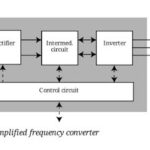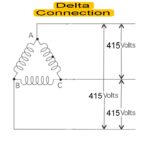Why single-phase induction motor is not self-starting?
(i) a squirrel-cage rotor as to a 3-phase motor and
(ii) a single-phase winding on the stator
The single-phase stator winding produces a magnetic field that pulsates (alternate) in strength in a sinusoidal manner. but in case of 3 phase induction motor magnetic field rotating one.
The field polarity reverses after each half-cycle of AC voltage but the field does not rotate. Consequently, the alternating flux cannot produce rotation in a stationary squirrel-cage rotor. this is the main reason for single-phase induction motor not self-starting.
However, if the rotor of a single-phase induction motor is rotated in one direction by some mechanical means it will continue to run in the direction of rotation As a fact, the rotor quickly accelerates until it reaches a speed slightly below the synchronous speed. once the motor is running at this speed, it will continue to rotate even though single-phase current is flowing through the stator winding
How to make single-phase induction motor self-starting?
To make a single phase induction motor self-starting, we should need to produce a revolving stator magnetic field. This may be achieved by converting a single-phase supply into two-phase supply through the use of an additional winding called starting winding or auxiliary winding. employed perpendicular to main winding(90 degree apart) and it can be removed when motor attains sufficient speed, depending upon the type of the motor.


